We check the coolant level daily before the trip.
The fluid level should be checked on a cold engine.
On a warm engine, the fluid level will be above the maximum mark on the expansion tank.
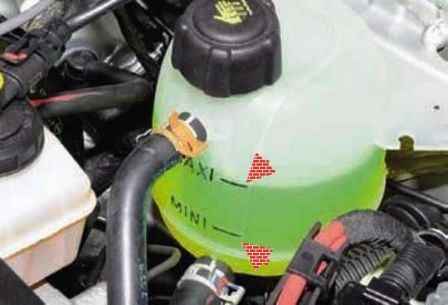
On a cold engine, the fluid level should be between the MAXI and MINI marks.
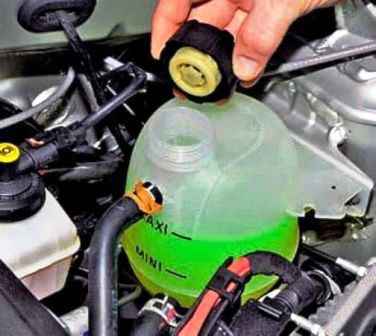
In order to accurately determine the fluid level, you need to install the car on a horizontal surface.
If there is not enough fluid, then unscrew the cap of the expansion tank
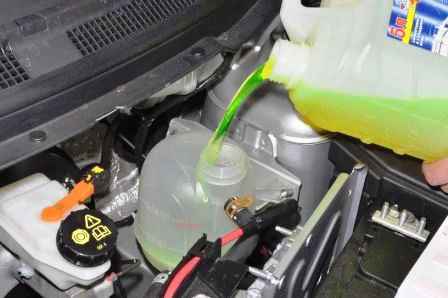
Add coolant to the reservoir.
If the liquid level in the cooling system is constantly decreasing, then the system is leaky (there is a leak).
We need to find the place of fluid leakage and fix the problem.
Replacing engine coolant
Nissan Engine Cooland Type D fluid is poured into the engine cooling system.
If the car is equipped with a manual transmission, 5 liters are poured; if the gearbox is automatic, then 5.7 liters are poured.
The engine coolant must be replaced after three years of operation.
We install the car on a lift or a viewing ditch.
There are no taps or coolant drain plugs on the engine block and radiator.
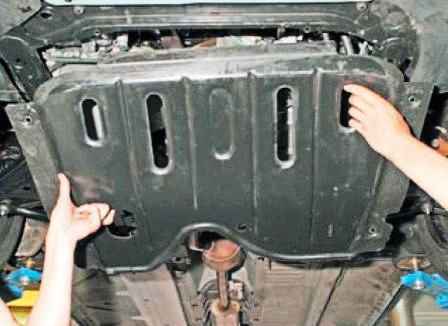
To drain the coolant, remove the engine protection (article - Removing the protection of the Nissan Almera power unit)
We substitute a container for draining the coolant, it is desirable that it be a basin or a wide container of at least 6 liters.

With sliding pliers, we compress the ends of the hose clamp securing the hose to the lower radiator pipe and slide the clamp along the hose (you can replace the clamp with a screw one, so that later it will be easier to remove and install the clamp).
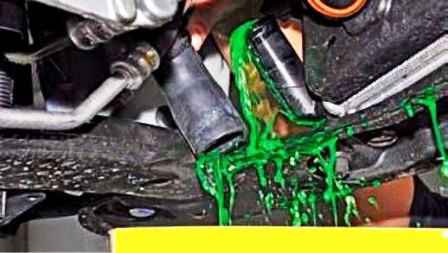
Disconnect the hose from the radiator pipe and drain the liquid into a substituted container.
After starting to drain the liquid, open the cover of the expansion tank.
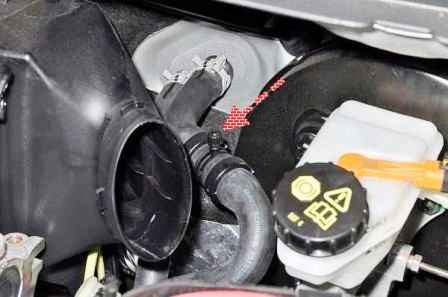
Unscrew the cap of the drain fitting located on the hose for draining fluid from the heater radiator.
After draining the liquid, it is advisable to flush the cooling system with water.
After draining the liquid, we put the outlet hose on the radiator pipe and fix it with a clamp.
Fill the coolant through the expansion tank.
As soon as the liquid begins to flow out of the drain fitting, we wrap the cap on the fitting.
Add liquid to the expansion tank.
To better fill the system without air pockets, you need to periodically squeeze the radiator hoses by hand.
Pour the liquid up to the maximum mark on the tank wall.
We start the engine, warm it up to operating temperature and set the crankshaft speed to 2500 min-1.
Holding this frequency, we wait for two or three fan turns on.
During this time, the system automatically deletes air is coming out.
When the engine is running, we monitor the temperature of the coolant according to the indicator in the instrument cluster.
If the indicator scale is completely shaded, and the fan does not turn on, turn on the heater and check how much air enters through the heater.
If the heater supplies heated air, then the fan is faulty, and if it is cold, then an air lock has formed in the system.
You need to turn off the engine and after it cools down, open the plug of the expansion tank.
Start the engine and let it run for four to five minutes. We squeeze the radiator hoses by hand.
Close the plug of the expansion tank.
After several trips, you need to check the coolant level.





